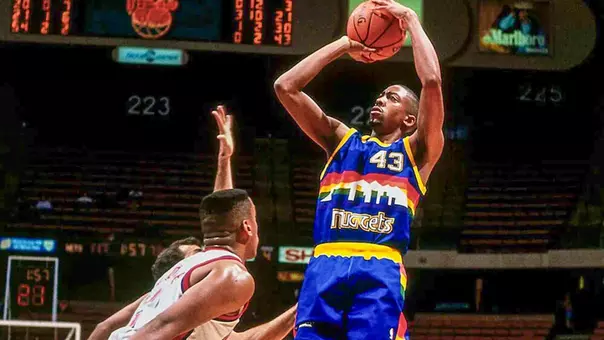University of Louisiana at Lafayette Athletics

Cajuns Top State Public Institutions In Federal Grad Rates For Fourth Straight Year
11/15/2016 2:38:00 PM | Athletics, Academic
Louisiana ranks 12th among Group of 5 schools in overall FGR
LAFAYETTE – For the fourth consecutive year, Louisiana Ragin' Cajuns student-athletes continued their excellence in the classroom as they posted the highest graduation rate among public institutions in the state of Louisiana while tying for the top mark among Sun Belt Conference schools in the latest Federal Graduation Rate Report which was released by the NCAA.
Ragin' Cajuns student-athletes posted a four-year Federal Graduation Rate (FGR) of 66 percent, a one-percent improvement from last year's average and tops among the state's 11 Division I public institutions. The Ragin' Cajuns Student-Athlete Graduation Success Rate (GSR) remained at 80 percent after making a four-point upgrade from two years ago.
The statistics include student-athletes on aid entering school during the 2009-10 academic year, and it indicates the percentage of those who graduate within six years.
"For the fourth consecutive year, our student-athletes are graduating at a higher rate than any other public university in the state of Louisiana and among our fellow Sun Belt Conference peers," Deputy Athletic Director/Senior Women Administrator Dr. Jessica Leger said. "This accomplishment is a testament to the academic commitment demonstrated daily by our student-athletes, coaches, and academic support staff."
Louisiana's FGR ranked 12th among institutions from the Group of 5 schools, ahead of a majority of schools from both Conference USA and the Mountain West, while ranking second behind Tulane for the best overall mark in Louisiana.
"What makes our department unique is our policy that each head coach is directly responsible for overseeing the academic progress of each student-athlete involved in their respective program," Leger said. "This philosophy is a primary contributor to the academic achievements of our student-athletes. Our coaches primarily focus on competition and practice, but they also understand the importance of academics and impress high expectations on their teams.
"In conjunction with support from our head coaches, our academic support staff has continued to work tirelessly to provide our student-athletes with quality academic support services that aid in achieving academic success."
Both the GSR and FGR are based on the number of student-athletes on athletics aid enrolling in school each year. A number of variables may impact these figures, such as student-athletes who opt for professional or educational opportunities outside of their original institution, coaching staff changes, and student-athletes in good academic standing who choose to leave school early.
The FGR is mandated by the U.S. Government and reflects the number of scholarship student-athletes who enter an institution in a specific academic year and graduate from that same institution within six academic years. It does not factor in transfer students leaving or entering an institution; the FGR counts transfers simply as non-graduates and therefore is typically lower than the GSR.
The GSR was developed by the NCAA as part of its academic reform initiative to more accurately measure the academic success of Division I student-athletes by better accounting for the many different academic paths followed by today's college students. It accounts for students who transfer into an institution, and does not penalize institutions that have student-athletes who choose to transfer out while still in good academic standing. The NCAA began collecting GSR data with the entering freshman class of 1995.
Ragin' Cajuns student-athletes posted a four-year Federal Graduation Rate (FGR) of 66 percent, a one-percent improvement from last year's average and tops among the state's 11 Division I public institutions. The Ragin' Cajuns Student-Athlete Graduation Success Rate (GSR) remained at 80 percent after making a four-point upgrade from two years ago.
The statistics include student-athletes on aid entering school during the 2009-10 academic year, and it indicates the percentage of those who graduate within six years.
"For the fourth consecutive year, our student-athletes are graduating at a higher rate than any other public university in the state of Louisiana and among our fellow Sun Belt Conference peers," Deputy Athletic Director/Senior Women Administrator Dr. Jessica Leger said. "This accomplishment is a testament to the academic commitment demonstrated daily by our student-athletes, coaches, and academic support staff."
Louisiana's FGR ranked 12th among institutions from the Group of 5 schools, ahead of a majority of schools from both Conference USA and the Mountain West, while ranking second behind Tulane for the best overall mark in Louisiana.
"What makes our department unique is our policy that each head coach is directly responsible for overseeing the academic progress of each student-athlete involved in their respective program," Leger said. "This philosophy is a primary contributor to the academic achievements of our student-athletes. Our coaches primarily focus on competition and practice, but they also understand the importance of academics and impress high expectations on their teams.
"In conjunction with support from our head coaches, our academic support staff has continued to work tirelessly to provide our student-athletes with quality academic support services that aid in achieving academic success."
Both the GSR and FGR are based on the number of student-athletes on athletics aid enrolling in school each year. A number of variables may impact these figures, such as student-athletes who opt for professional or educational opportunities outside of their original institution, coaching staff changes, and student-athletes in good academic standing who choose to leave school early.
The FGR is mandated by the U.S. Government and reflects the number of scholarship student-athletes who enter an institution in a specific academic year and graduate from that same institution within six academic years. It does not factor in transfer students leaving or entering an institution; the FGR counts transfers simply as non-graduates and therefore is typically lower than the GSR.
The GSR was developed by the NCAA as part of its academic reform initiative to more accurately measure the academic success of Division I student-athletes by better accounting for the many different academic paths followed by today's college students. It accounts for students who transfer into an institution, and does not penalize institutions that have student-athletes who choose to transfer out while still in good academic standing. The NCAA began collecting GSR data with the entering freshman class of 1995.
Inside Louisiana Athletics Recap for Dec 10, 2025 to Dec 16, 2025
Tuesday, December 16
Garry Brodhead Media Availability (Dec 14, 2025)
Monday, December 15
Quannas White Media Availability (Dec 14, 2025)
Monday, December 15
Terrence Williams Media Availability (Dec 12 2025)
Friday, December 12












